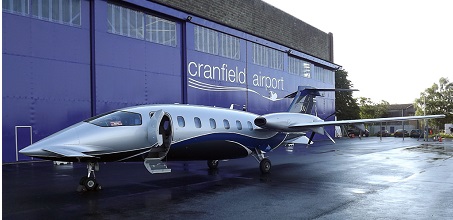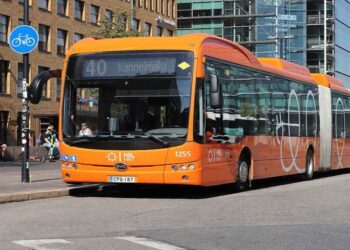Saab Digital Air Traffic Solutions will deliver a digital air traffic system to Cranfield Airport, based on a solution developed since 2006, and approved by authorities for operational use since 2015. Saab Digital Air Traffic Solutions, is the only company in the world with an approved, certified solution for remote digital air traffic control in operation.
Saab Digital Air Traffic Solutions CEO Johan Klintberg and Professor Sir Peter Gregson, Vice-Chancellor and Chief Executive of Cranfield University sign the contract.
Cranfield Airport is based 70 km northwest of London and owned by Cranfield University. Cranfield is an important university in Europe for aerospace and the only university in the world to own and run an airport, on campus, and to have airline status.
The digital tower will serve Cranfield Airport and will further enhance the University’s research capabilities, which include the Aerospace Integration Research Centre (AIRC) and the newly announced Digital Aviation Research and Technology Centre (DARTeC).
Professor Sir Peter Gregson Vice-Chancellor and Chief Executive of Cranfield University said: “The digital control tower will be a significant boost for Cranfield Airport and the research capabilities of the University. Combined with our existing and new facilities, the digital control tower will cement Cranfield’s place as the home of the leading aerospace research facilities in Europe.â€
Saab Digital Air Traffic Solutions is further strengthening its market leader position, as the first supplier providing a digital solution for air traffic control.
“Our proven technology and operational experience is an important differentiator in the market. We are also looking forward to the collaboration with Cranfield University and the strong links the university has with the industry in the area of innovative research and developmentâ€, says Johan Klintberg, CEO of Saab Digital Air Traffic Solutions.
How does the digital technology work?
A mast will be installed at Cranfield Airport, equipped with cameras and sensors recording everything that takes place. All this data is sent digitally to a control centre and is projected onto a 360-degree view on large screens in front of the air traffic controllers.
This solution combines image monitoring combined with other systems, such as radar display, navigation aids and information about flight plans and weather conditions; all the information that the controllers need to manage the traffic.
Improved safety is one of the most important cornerstones, and the camera technology in the new remotely controlled tower makes it possible to cope with difficult light conditions much better than before. The system adjusts the images automatically when there is direct sunlight or there are snow reflections, which makes it possible for the controllers to follow an aircraft that is climbing skywards without becoming dazzled. The technology also allows controllers to zoom in and enhance the image in order to pick out details.
The digital air traffic control system complies with same existing rules and regulations as for conventional towers and the data traffic can take several routes to ensure that the data arrives even if an interruption occurs “Moving on from conventional towers to the digital tower technology drives change in a number of ways. The digitalisation of the data they collect and distribute increases the operational efficiency and safety across an airport. What we can see right now is a huge interest in the market, from small to big airports all over the worldâ€, says Per Ahl, head of Marketing & Sales at Saab Digital Air Traffic Solutions.


































